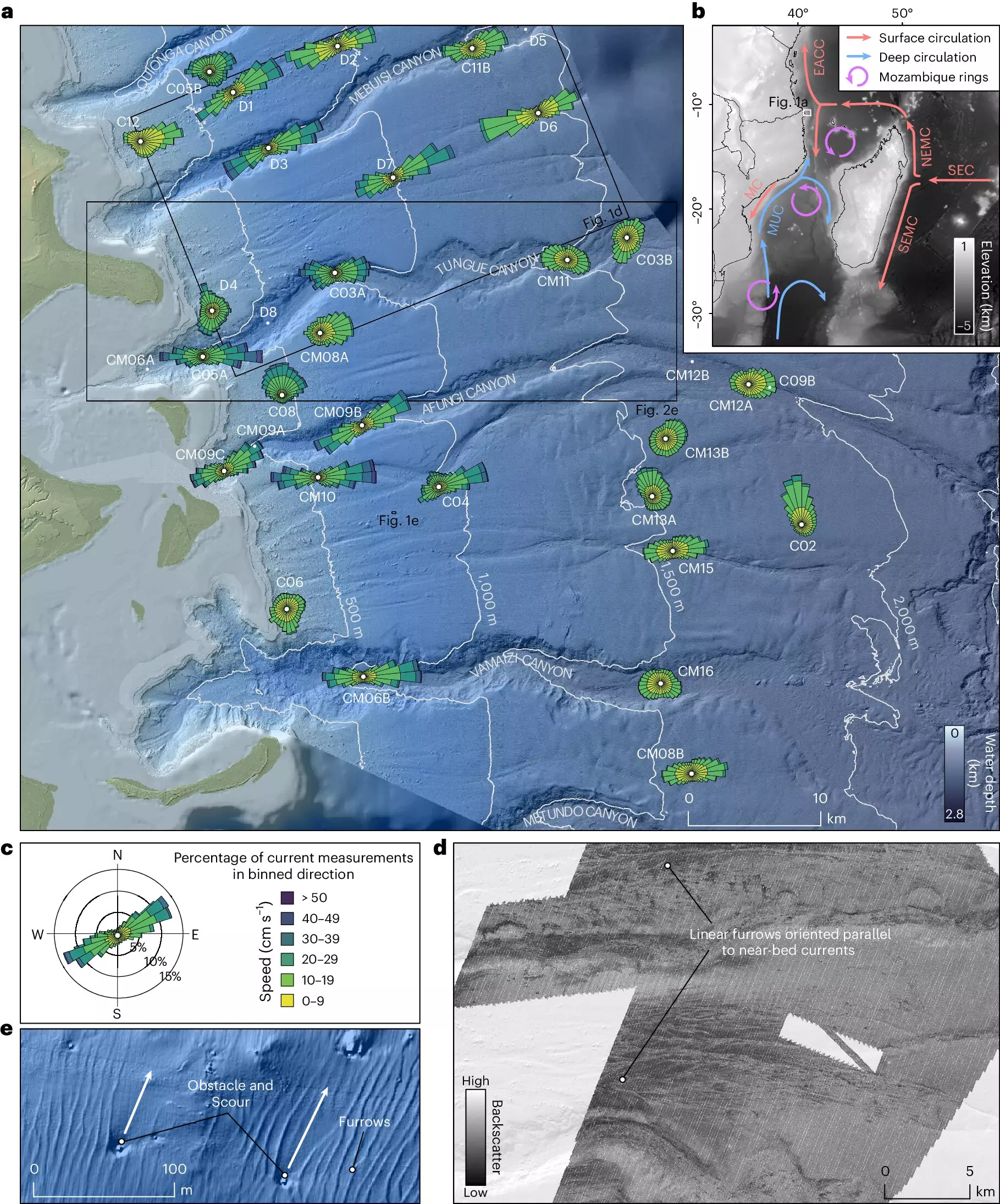Recent research conducted by the National Oceanography Center (NOC) and the University of Manchester has shed light on the intricate relationship between changes in the ocean floor and deep-sea currents. Contrary to previous assumptions, the study published in Nature Geoscience revealed that the currents across the ocean floor are far from being continuous and steady. Instead, they vary in speed, direction, and intensity based on the uneven surfaces and features found on the seafloor.
The findings of this research have significant implications for scientists seeking to understand the deep-sea pathways of nutrients and pollutants. By uncovering how currents interact with the seafloor, researchers can more accurately track the movement of particles like sand, mud, organic carbon, and pollutants in the ocean. This knowledge is crucial for identifying sources of pollution, predicting its impact on ecosystems, and interpreting the long-term records of past climate change left in seafloor deposits.
One of the key challenges in studying deep-sea currents lies in the lack of direct measurements taken in these remote and inaccessible regions. Most existing data on ocean currents come from observations conducted high above the seafloor, over short periods, and at limited locations. According to Dr. Mike Clare of NOC, the lead scientist on the project, this gap in knowledge has hindered our understanding of the dynamic nature of seafloor currents in deep waters.
To address this gap, researchers deployed thirty-four deep-sea moorings equipped with high-frequency Acoustic Doppler Current Profilers (ADCPs) to monitor seafloor currents across an extensive area over four years. The study, which involved international collaboration with experts from the UK, Canada, Germany, and Italy, revealed that seafloor currents offshore Mozambique are highly variable, changing in intensity between seasons and even reversing direction over short periods.
Dr. Lewis Bailey, the lead author of the study, emphasized the importance of understanding the variability of seafloor currents, likening it to observing the ever-changing weather patterns in Manchester. Meanwhile, Dr. Ian Kane from the University of Manchester noted the complexity of deep-sea currents, highlighting the challenges in observing and interpreting their behavior. Professor Elda Miramontes from the University of Bremen underscored the significance of the study’s findings in improving models for reconstructing past climate changes related to ocean dynamics.
The recent study on ocean floor changes and their impact on deep-sea currents has provided valuable insights into the complexity of marine environments. By unraveling the dynamics of seafloor currents, scientists are better equipped to trace the pathways of nutrients and pollutants in the ocean, ultimately enhancing our understanding of past climate changes and potential future impacts. Continued research and sustained observations of the deep sea remain crucial in advancing our knowledge of the ocean and its ecosystems.


Leave a Reply